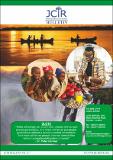| dc.description | This information is further utilized by various key stakeholders ranging from civil society organizations, research institutions, government ministries, trade unions, the media, private sector and the general public. Through the lens of the BNNB, policy interventions that ultimately would ensure improved living standards especially for the poor, vulnerable and marginalized populations in Zambia are provided. This work has over the years been made possible with the support from diverse Partners and most recently the Norwegian Church Aid, Danish Church Aid and the Scottish Catholic International Aid Fund (SCIAF). | en |
| dc.description.abstract | Following the closure of the first half of the year 2022, a trends analysis of the cost of living between January and June was conducted to gain insights on the movement of the cost of living, its drivers, relevant policy developments and possible interventions. Overall the findings revealed an upward cost of living in most of the towns. Beginning with the capital city, Lusaka recorded an increase of K252.21 from K9, 049.25 to K9, 301.46. Kasama, though the cheapest town to live in, also saw an increase of K98 from K4569 to K4667. Mansa
moved to K5, 372 from K5, 083. Similarly, Choma rose to K5,912 from K5,535, Chinsali rose by K173 to K5,244 from K5,071, Mpika had K5,888 from K5,443, Monze moved to K5,775 from K5,316, Mongu K5,048 from K4,612, Livingstone jumped to K6,280 from K5,982, Luanshya to K6,363 from K6,017, Kitwe K7,162 from K6,811, Kabwe
K7,079 from K6,770, Ndola K7,404 from K7,239 and Solwezi K7,932 from K7,634. | en |

